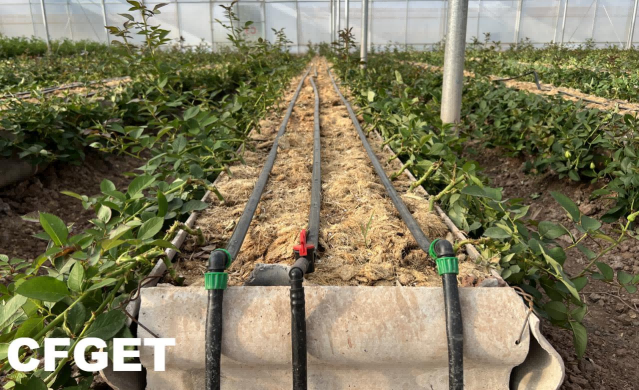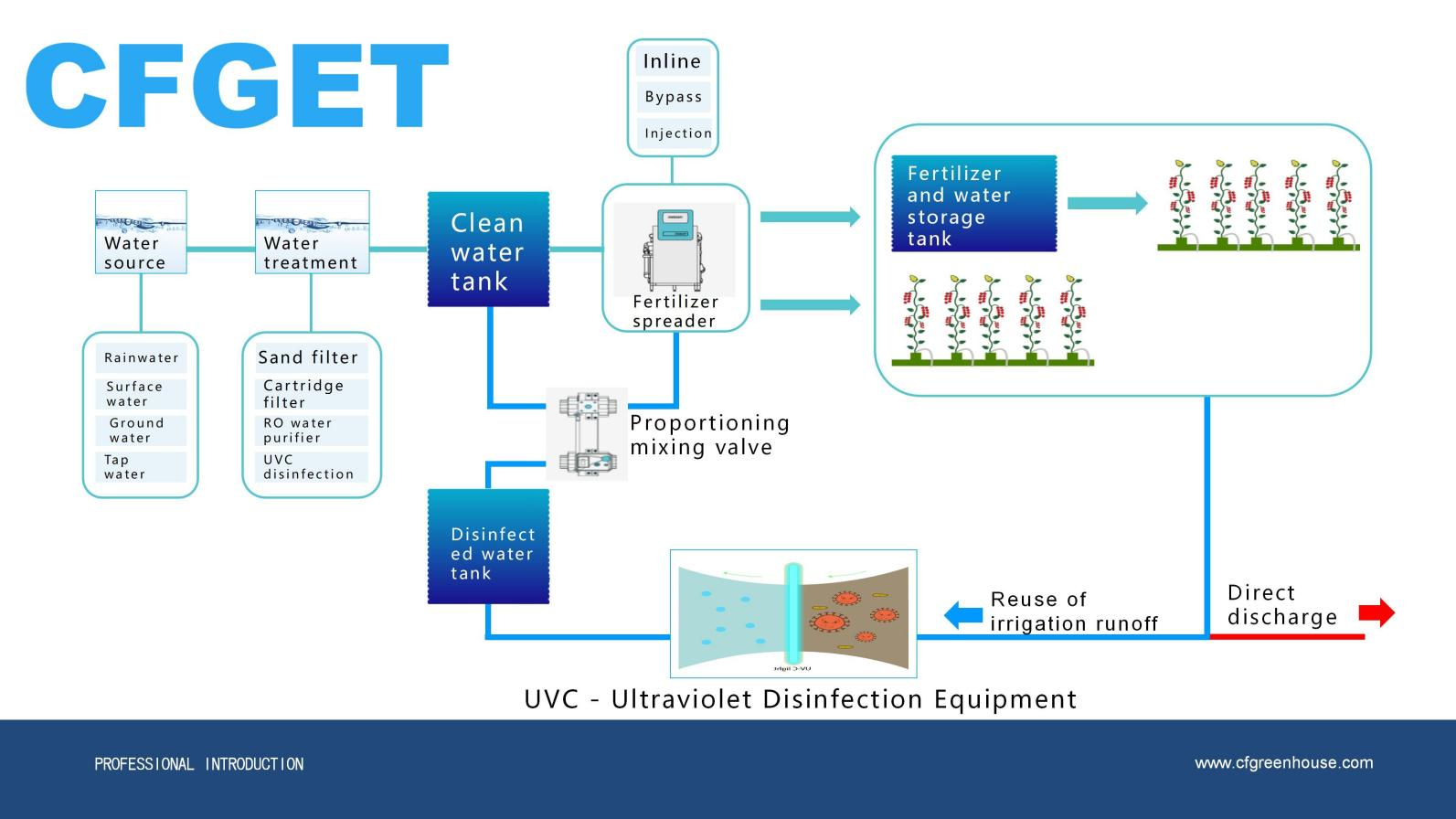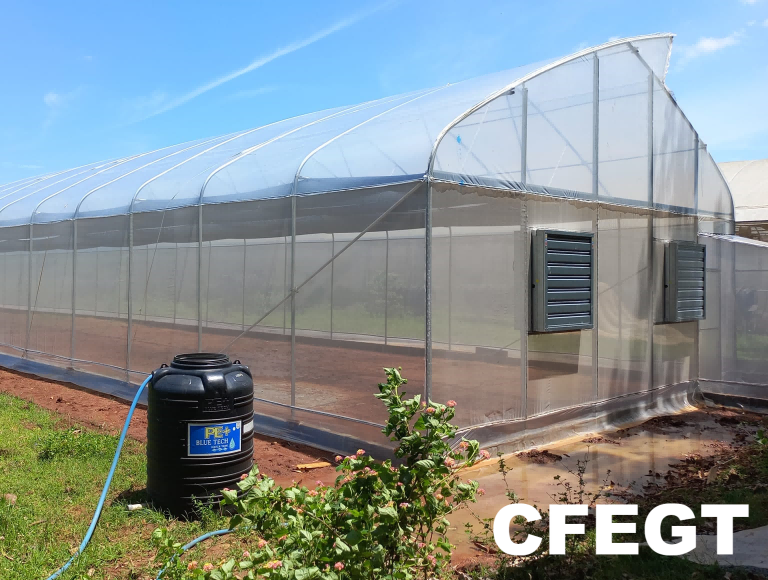As greenhouse farming continues to evolve, one of the most powerful innovations driving this transformation is precision fertilization and irrigation. By adopting advanced technologies and techniques, growers can optimize resource use, improve crop yield and quality, and significantly reduce environmental impact. Follow Chengfei Greenhouse to explores the key principles, practical benefits, and advanced technologies that enable precise control of nutrients and water in greenhouse environments, helping growers achieve maximum efficiency and sustainability.
The Foundation of Precision Fertilization: Tailoring Nutrients to Crop Needs
*Understanding Crop-Specific Nutrient Requirements
Each crop has distinct nutrient requirements, and understanding these needs is essential for efficient fertilization. For instance, nitrogen, phosphorus, and potassium (N-P-K) are primary nutrients required by most crops, but the ideal balance of these elements varies significantly depending on the crop type and growth stage. Precision fertilization involves adjusting nutrient levels to match the specific demands of the plant, ensuring optimal growth without overuse or deficiency.
*Leveraging Sensor Technology for Real-Time Adjustments
Modern greenhouses increasingly rely on sensor technology to monitor real-time conditions within the growing environment. Soil moisture sensors, nutrient sensors, and pH meters continuously feed data to centralized systems, allowing growers to adjust fertilization strategies on the fly. This level of control reduces human error, ensures that plants receive consistent nutrition, and supports healthier, more productive crops.
Precision Irrigation: Maximizing Water Efficiency
*Automated Irrigation Systems
Greenhouse irrigation has progressed far beyond manual watering, thanks to automated systems such as drip irrigation and micro-sprinklers. These systems deliver water directly to the root zone, where it’s most needed, minimizing water loss due to evaporation or runoff. Automated irrigation can be set to precise schedules based on the crop's water needs, further enhancing efficiency.
Drip irrigation, in particular, has become a popular choice in precision irrigation. By delivering water directly to the base of each plant, it ensures that water use is minimized while maintaining optimal soil moisture levels. Additionally, it reduces the risk of fungal diseases, which thrive in overly wet foliage.

*Sensors and Data-Driven Irrigation
Just as in precision fertilization, sensors play a vital role in irrigation management. Soil moisture sensors continuously monitor the water content of the soil or substrate, providing real-time data that informs irrigation decisions. These sensors can be integrated with climate control systems, ensuring that irrigation is automatically adjusted based on changes in humidity, temperature, or other environmental factors. By avoiding over- or under-watering, growers can maintain ideal conditions for plant growth while conserving water resources.For example, in arid regions where water conservation is critical, these systems ensure that plants receive just the right amount of water, avoiding waste while supporting healthy growth. This approach also minimizes the risk of waterlogging, which can damage root systems and stunt plant growth.

The Combined Benefits of Precision Fertilization and Irrigation
*Enhanced Yield and Quality
The primary goal of precision agriculture is to increase both the quantity and quality of crops. When crops receive the exact amount of nutrients and water they need, they grow faster, healthier, and more uniformly. This leads to higher yields, better-quality produce, and a more consistent product that can command premium prices in the market. For example, precision-fertilized tomatoes grown in a greenhouse may exhibit more vibrant colors, superior flavor, and a longer shelf life compared to those grown in less controlled conditions.
*Resource Efficiency and Cost Reduction
Precision systems also enable growers to use resources more efficiently. By carefully managing fertilizer and water inputs, greenhouse operators can reduce their overall consumption of these costly resources. This not only lowers operating expenses but also ensures that resources are used responsibly, minimizing waste and the environmental footprint of the farm. In regions where water scarcity or high fertilizer costs are major concerns, the financial savings associated with precision techniques can be significant.
*Environmental Sustainability
Sustainability is a growing concern in modern agriculture, and precision fertilization and irrigation offer solutions that support long-term environmental goals. By preventing over-application of fertilizers and reducing water use, precision techniques help minimize nutrient runoff into nearby water systems, a major cause of pollution in traditional farming. Furthermore, they contribute to soil health by maintaining a balanced nutrient profile and avoiding the salinization or nutrient depletion that can result from improper management.

Precision fertilization and irrigation represent the future of sustainable, efficient greenhouse cultivation. By leveraging technology to fine-tune nutrient and water delivery, growers can achieve higher yields, better-quality crops, and significant cost savings. As the demand for sustainable agriculture grows, precision techniques will play an increasingly important role in meeting the challenges of modern farming while protecting our planet’s precious resources.With these advanced tools and techniques, greenhouse farmers can unlock new levels of productivity and efficiency, setting the stage for a more sustainable and profitable future in agriculture.
Email: info@cfgreenhouse.com
Phone: (0086) 13550100793
Post time: Oct-15-2024







 Click to Chat
Click to Chat